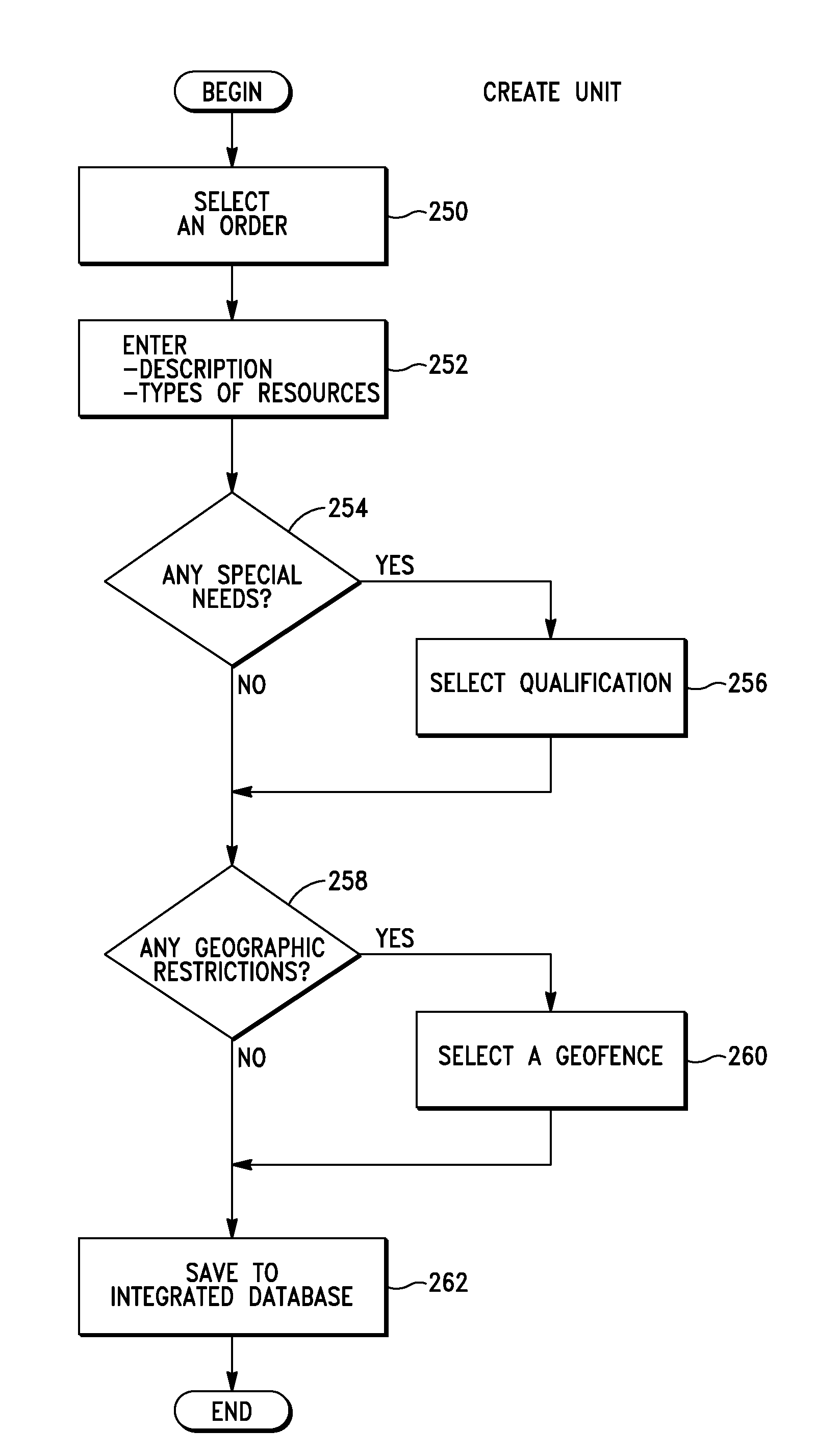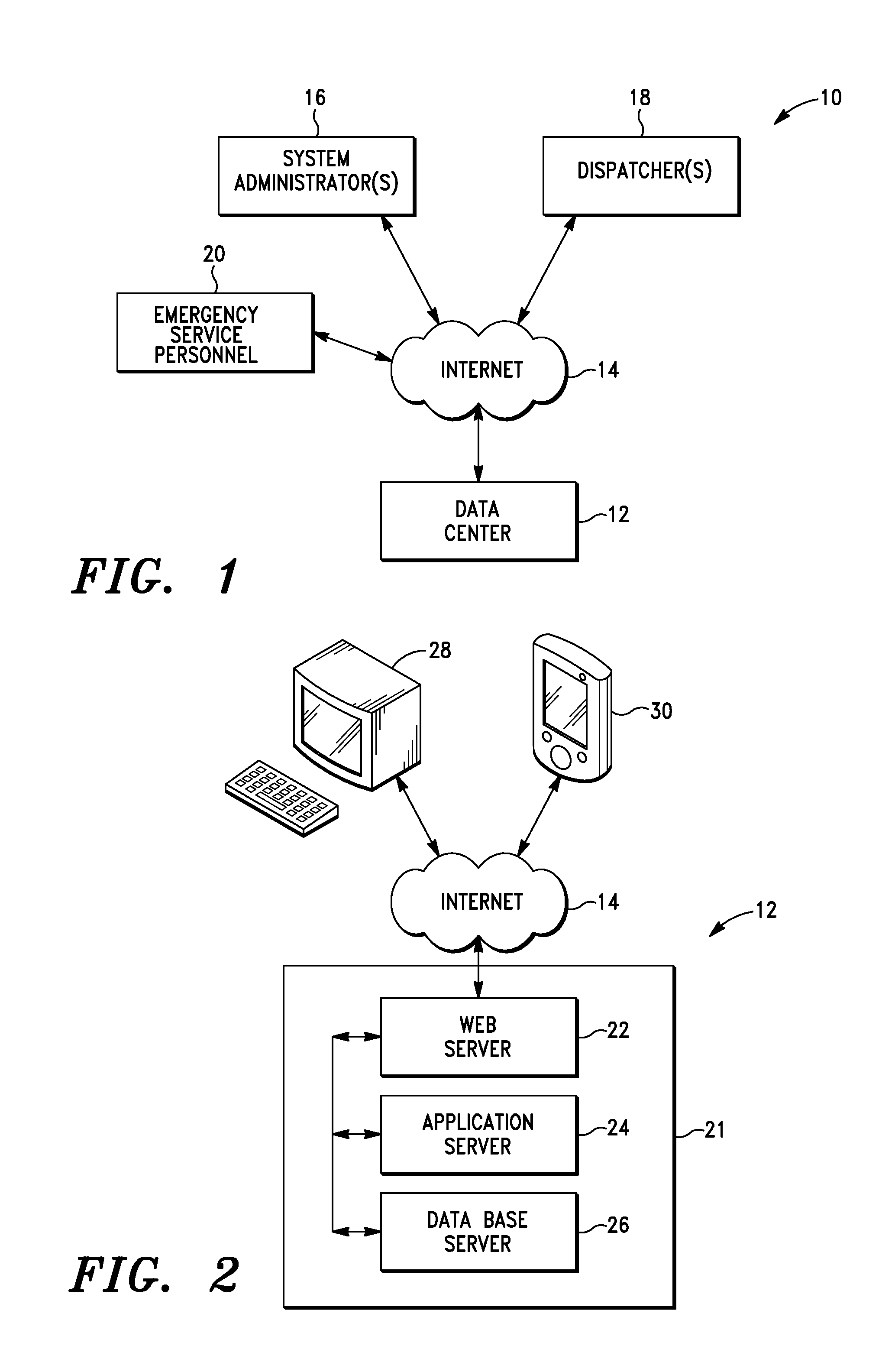Emergency services dispatch system with user-defined resource restrictions
a dispatch system and resource restriction technology, applied in the field of emergency services, can solve the problems of inability to change hardcoded parameters, limited success of systems, and high cost of operation
- Summary
- Abstract
- Description
- Claims
- Application Information
AI Technical Summary
Benefits of technology
Problems solved by technology
Method used
Image
Examples
Embodiment Construction
[0027]The present invention is directed to a system and method for computer-aided dispatch (CAD) of emergency services. As used herein, “emergency services” encompasses emergency medical services (EMS), police, fire, and other emergency first-responder services. While the invention will be described in detail below with reference to various exemplary embodiments, it should be understood that the invention is not limited to the specific system configurations or methodologies of these embodiments. For example, although an exemplary embodiment may describe a specific vehicle used in conjunction with emergency medical services (EMS), it should be understood that the invention may equally be used with other emergency services, such as fire or police dispatch, in which case the personnel, vehicles and equipment will vary from those described in the exemplary embodiment. In addition, although the exemplary embodiments are described as embodying several different features, one skilled in th...
PUM
 Login to View More
Login to View More Abstract
Description
Claims
Application Information
 Login to View More
Login to View More - R&D
- Intellectual Property
- Life Sciences
- Materials
- Tech Scout
- Unparalleled Data Quality
- Higher Quality Content
- 60% Fewer Hallucinations
Browse by: Latest US Patents, China's latest patents, Technical Efficacy Thesaurus, Application Domain, Technology Topic, Popular Technical Reports.
© 2025 PatSnap. All rights reserved.Legal|Privacy policy|Modern Slavery Act Transparency Statement|Sitemap|About US| Contact US: help@patsnap.com



